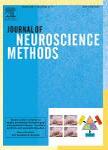版权所有:内蒙古大学图书馆 技术提供:维普资讯• 智图
内蒙古自治区呼和浩特市赛罕区大学西街235号 邮编: 010021

作者机构:Cent South Univ Sch Comp Sci & Engn Hunan Prov Key Lab Bioinformat Changsha 410083 Peoples R China Univ Saskatchewan Div Biomed Engn Saskatoon SK S7N 5A9 Canada Univ Saskatchewan Dept Mech Engn Saskatoon SK S7N 5A9 Canada
出 版 物:《JOURNAL OF NEUROSCIENCE METHODS》 (神经科学方法杂志)
年 卷 期:2020年第343卷第0期
页 面:108840-108840页
核心收录:
学科分类:0710[理学-生物学] 1002[医学-临床医学] 1001[医学-基础医学(可授医学、理学学位)] 10[医学]
基 金:National Natural Science Foundation of China Natural Science Foundation of Hunan Province [2019JJ50775,2018JJ2534] 111 Project [B18059] Hunan Provincial Science and Technology Program [2018WK4001] Fundamental Research Funds for the Central Universities of Central South University [2019zzts590]
主 题:Autism spectrum disorder identification Functional magnetic resonance imaging Functional connectivity Stacked denoising autoencoder Ensemble learning
摘 要:Background: Autism spectrum disorder (ASD) is a neurodevelopmental disorder that could cause problems in social communications. Clinically, diagnosing ASD mainly relies on behavioral criteria while this approach is not objective enough and could cause delayed diagnosis. Since functional magnetic resonance imaging (fMRI) can measure brain activity, it provides data for the study of brain dysfunction disorders and has been widely used in ASD identification. However, satisfactory accuracy for ASD identification has not been achieved. New method: To improve the performance of ASD identification, we propose an ASD identification method based on multi-atlas deep feature representation and ensemble learning. We first calculate multiple functional connectivity based on different brain atlases from fMRI data of each subject. Then, to get the more discriminative features for ASD identification, we propose a multi-atlas deep feature representation method based on stacked denoising autoencoder (SDA). Finally, we propose multilayer perceptron (MLP) and an ensemble learning method to perform the final ASD identification task. Results: Our proposed method is evaluated on 949 subjects (including 419 ASDs and 530 typical control (TCs)) from the Autism Brain Imaging Data Exchange (ABIDE) and achieves accuracy of 74.52% (sensitivity of 80.69%, specificity of 66.71%, AUC of 0.8026) for ASD identification. Comparison with existing methods: Compared with some previously published methods, our proposed method obtains the better performance for ASD identification. Conclusion: The results suggest that our proposed method is efficient to improve the performance of ASD identification, and is promising for ASD clinical diagnosis.